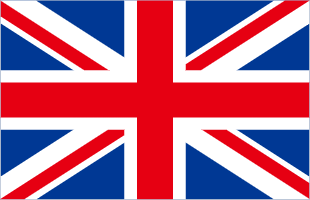Welcome to our guide on the perplexing conundrum of IP67/IP68 waterproof enclosure capabilities. The IP rating system is a crucial factor when you’re choosing a device for ruggedness. IP67 and IP68 are two of the most common IP ratings of rugged devices. The first number denotes the dust tightness and the second number denotes the water resistance. The higher, the better.
As such, the key difference between IP67 and IP68 is the higher water resistance in IP68. As the first number is 6 in both, the dust tightness is the same. Whereas the IP67’s “7” rating of water resistance means that the device can be submerged in water up to 1 meter for 30 minutes, the “8” rating of water resistance in IP68 means that the device can be submerged for even longer. The exact duration of this differs from manufacturer to manufacturer.
In some cases, IP68 can also mean that the device can be submerged in water up to 1.5 meters for 30 minutes or an hour. The exact numbers depend on the manufacturer. The thing to keep in mind is that IP68’s water resistance is superior to IP67’s water resistance, whereas dust-proofing or protection against solids is at the same level.
Below, our guide on IP67 vs IP68 is going to peel back the layers on this technical topic by covering the water resistance aspect, and dust resistance aspect, as well as helping you choose between the two. Without further ado, let’s dive right into it!
IP67 vs. IP68 Water Resistance Comparison
Enclosures with either rating will have complete protection against dripping, spraying, and splashing water. They will also have the same protection against pressurized water jets and light, short-term submersion in water.
The key difference is that the IP68 enclosure device will offer better protection when submerged in water and for longer.

Both enclosures will be fine if submerged in water at a depth of 1 meter for 30 minutes. The IP68 enclosure will offer additional depth and/or length of time beyond that, such as 1.5 meters for up to 1 hour. The exact depth and length of time depend on the manufacturer.
Do note that the International Electrotechnical Commission (IEC) assigns these ratings for freshwater only. It’s not to be taken as a guide for performance in salt water (or any other liquid, for that matter, like your coffee).
IP67 vs. IP68: Protection from Solids
In terms of protection against solids, such as dust, flying particulates, accidental contact with small objects, chipping, and so on, both are rated the same. This is because the first number following the “IP” part is for proofing against solids – and it’s the same in both types of enclosures (6 in both IP67 and IP68).
The solids protection ranges from 0 to 6. At 2, it’s just protection against fingers. At 5, it’s well-protected against dust. And at 6, which is the case with both IP67 and IP68, it’s fully dust-tight – which roughly translates to complete dust protection from sand, flying particulates, and other smaller particles. These things cannot get inside the enclosure at all unless the device is damaged in some way.
Which One to Choose?
If you’re looking for a device that can withstand submersion for longer or deeper, then it’s a no-brainer that you need to go with a higher IP rating. In this case, that means going with the IP68 enclosure. But if you’re not going to be submerging the device in water of up to 1 meter for 30 minutes or longer, then you will be fine with either of these IP ratings.
The majority of Oukitel rugged smartphones and tablets come with an IP86 rating and they are bestsellers. It’s the safest IP rating for devices such as these, where protecting the electronic components is the difference between proper function and permanent damage. As such, you’re generally recommended to go with IP68 enclosures if there’s no dealbreaker there.
Ultimately, the choice depends on your use case and what you expect out of your device. Additionally, it also depends on the availability. Not all rugged devices have options in both, IP67 and IP68. This is mainly because IP68 is considered the more well-rounded and better pick in general, making it the go-to option for most manufacturers.
So, the IP67/IP68 waterproof consideration is all about water resistance level – the depth and duration are higher in IP68 vis-à-vis IP67. If that’s important to you, go ahead! That being said, keep in mind that the protection against solids is the same between the two. The same goes for light submersion or splashes. If your use case does not require submerging the device in water for longer periods of time and if you have a good option in IP67, then you should not think twice. On the other hand, if you’re getting an IP68 device and it’s ideal for you – the added water resistance is only going to make it a safer enclosure to work with.

















